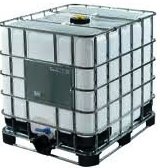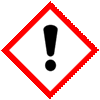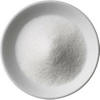| Anmol Chemicals is a group company. They are the pioneer manufacturers of Citric Acid, Pharmaceutical Food & Flavor chemicals in India. They have several manufacturing facilities spread across India. The group is exporters to UAE, Europe, Canada & USA etc. |
| The unit and or associates have one or more of the certifications like FDA GMP, ISO 9001, ISO 22000, HACCP, REACH, Kosher & Halal |
Citric Acid Solution SDS MSDS Sheet - Citric Acid Manufacturers
Monohydrate CAS No.:5949-29-1, Molecular Weight:
210.14, Chemical Formula: C6H8O7.H2O
Anhydrous CAS No.:77-92-9, Molecular Weight: 192.13, Chemical
Formula: C6H8O7
German Zitronensäure Hersteller
English Citric Acid Manufacturers
French Fabricants d'acide citrique
Spanish Fabricantes de ácido cítrico
Portuguese Fabricantes de ácido cítrico
Citric acid BP USP IP ACS Analytical Reagent FCC Food Grade Manufacturers
For MSDS Sheet Click Citric Acid MSDS ----or---- Citric Acid Solution MSDS
Citric
Acid
Anhydrous
Monohydrate
IP BP Ph. Eur. USP ACS AR LR FCC
Food Grades
Citric Acid Solution SDS, Safety Data Sheet
Section 1 - Chemical Product and Company Identification
MSDS Name: Citric Acid Solution
Synonyms: 2-Hydroxy-1,2,3-propanetricarboxylic acid Solution
Intended Use: Oil well fracturing and Industrial use.
Section 2 - Hazards Identification
GHS, Globally Harmonized System Classification in accordance with 29 CFR 1910
Classification according to Regulation (EC) No 1272/2008
Acute toxicity, Dermal (Category 5)
Skin irritation (Category 3)
Eye irritation (Category 2A)
Labeling according GHS USA & Regulation (EC) No 1272/2008
| GHS Label Elements  Irritant |
Signal Words: Warning
Hazard statements:
H312: Harmful in contact with skin
H316: Causes mild skin irritation
H319: Causes serious eye irritation
Precautionary statements:
P260: Do not breathe mist, vapors, spray.
P262: Do not get in eyes, on skin, or on clothing.
P264: Wash skin thoroughly after handling.
P280: Wear protective gloves/protective clothing/eye protection/face protection.
P270: Do not eat, drink or smoke when using this product.
P273: Avoid release to the environment.
P312: Call a POISON CENTER or doctor/physician if you feel unwell.
P332+313: If skin irritation occurs: Get medical advice/attention.
P302+ P352 - IF ON SKIN: Wash with plenty of soap and water.
P305+ P351 + P338 IF IN EYES: Rinse cautiously with water for several minutes. Remove contact lenses, if present and easy to do. Continue rinsing.
P337+P313 If eye irritation persists: Get medical advice/ attention.
Classification according to EU Directives 67/548/EEC or 1999/45/EC:
Symbols: Xi
R Phrases: R36 Irritating to eyes.
S Phrases: S26 In case of contact with eyes, rinse immediately with plenty of water and seek medical advice.
Section 3 - Composition, Information on Ingredients
Chemical Name: Citric Acid Solution
CAS#: 77-92-9
EINECS EC Number: 201-069-1
Percent: 48-52% in water.
Section 4 - First Aid Measures
Always seek medical attention after first aid measures are provided.
Eyes: Immediately flush eyes with plenty of water for at least 15 minutes, occasionally lifting the upper and lower eyelids. Get medical aid. Do NOT allow victim to rub or keep eyes closed.
Skin: Flush skin with plenty of soap and water for at least 15 minutes while removing contaminated clothing and shoes. Get medical aid if irritation develops or persists. Wash clothing before reuse.
Ingestion: Do NOT induce vomiting. If victim is conscious and alert, give 2-4 cupfuls of milk or water. Never give anything by mouth to an unconscious person. Get medical aid.
Inhalation: Remove from exposure to fresh air immediately. If breathing is difficult, give oxygen. Get medical aid. Do NOT use mouth-to-mouth resuscitation. If breathing has ceased apply artificial respiration using oxygen and a suitable mechanical device such as a bag and a mask.
Notes to Physician: Treat symptomatically and supportively.
Section 5 - Fire Fighting Measures
General Information: As in any fire, wear a self-contained breathing apparatus in pressure-demand, MSHA/NIOSH (approved or equivalent), and full protective gear. During a fire, irritating and highly toxic gases may be generated by thermal decomposition or combustion.
Extinguishing Media: Use water spray, dry chemical, carbon dioxide, or chemical foam. Use agent most appropriate to extinguish fire.
NFPA Rating: CAS# 77-92-9: Health- 2, Flammability- 1, Instability- 0
Section 6 - Accidental Release Measures
General Information: Use proper personal protective equipment.
Spills/Leaks: Vacuum or sweep up material and place into a suitable disposal container. Very fine particles of Citric Acid Solution can cause a fire or explosion. Eliminate all ignition sources. Clean up spills immediately, observing precautions in the Protective Equipment section. Avoid generating dusty conditions. Remove all sources of ignition. Provide ventilation. Spill of Citric Acid Solution may be neutralized with lime. Do not get water inside containers.
Section 7 - Handling and Storage
Handling: Wash thoroughly after handling. Use with adequate ventilation. Minimize dust generation and accumulation. Avoid contact with eyes, skin, and clothing. Keep container of Citric Acid Solution tightly closed. Avoid ingestion and inhalation. Do not allow contact with water. Keep Citric Acid Solution from contact with moist air and steam.
Storage: Store Citric Acid Solution in a tightly closed container. Store away from oxidizers. Store in a cool, dry, well-ventilated area away from incompatible substances. Store Citric Acid Solution protected from moisture.
Section 8 - Exposure Controls, Personal Protection
Airborne Exposure Limits: None established.
Ventilation System: A system of local and/or general exhaust is recommended to keep employee exposures as low as possible. Local exhaust ventilation is generally preferred because it can control the emissions of the contaminant at its source, preventing dispersion of it into the general work area. Please refer to the ACGIH document, Industrial Ventilation, A Manual of Recommended Practices, most recent edition, for details.
Personal Respirators (NIOSH Approved): For conditions of use where exposure to dust or mist is apparent and engineering controls are not feasible, a particulate respirator (NIOSH type N95 or better filters) may be worn. If oil particles (e.g. lubricants, cutting fluids, glycerin, etc.) are present, use a NIOSH type R or P filter. For emergencies or instances where the exposure levels are not known, use a full-face positive-pressure, air-supplied respirator. WARNING: Air-purifying respirators do not protect workers in oxygen-deficient atmospheres.
Skin Protection: Wear impervious protective clothing, including boots, gloves, lab coat, apron or coveralls, as appropriate, to prevent skin contact.
Eye Protection: Use chemical safety goggles and/or full face shield where dusting or splashing of solutions is possible. Maintain eye wash fountain and quick-drench facilities in work area of Citric Acid Solution.
Section 9 - Physical and Chemical Properties
Appearance: Citric Acid Solution is clear to off-white.
Odor: Citric Acid Solution is odorless.
Solubility: ca. 60 g/100 ml @ 20C (Anhydrous)
Density: 1.542
pH: 2.2 (0.1 N sol)
% Volatiles by volume @ 21C (70F): 0
Melting Point: ca. 100C (ca. 212F)
Molecular Weight: 192.13 (Citric Acid, Anhydrous)
Molecular Formula: C6H807 (Citric Acid, Anhydrous)
Section 10 - Stability and Reactivity
Chemical Stability: Citric Acid Solution is stable under normal temperatures and pressures.
Conditions to Avoid: Incompatible materials, dust generation, moisture, exposure to moist air or water.
Incompatibilities with Other Materials: Oxidizing agents, sulfides (inorganic, e.g. ferric sulfide, lead sulfide, sodium sulfide), metal nitrates, alkali carbonates, alkalis, potassium tartrate, acetates, bicarbonates.
Hazardous Decomposition Products: Carbon monoxide, irritating and toxic fumes and gases, carbon dioxide.
Hazardous Polymerization: Will not occur.
Section 11 - Toxicological Information
Oral rat LD50: 3 gm/kg; irritation skin rabbit: 500 mg/24H mild; eye rabbit: 750 µg/24H severe.
Carcinogenicity: No component of this product present at levels greater than or equal to 0.1% is identified as probable, possible or confirmed human carcinogen by IARC, ACGIH, OSHA and NTP.
Section 12 - Ecological Information
Toxicity to fish: mortality LC50 - Leuciscus idus melanotus - 440 mg/l - 48 h
Toxicity to daphnia and other aquatic invertebrates: static test - Daphnia magna (Water flea) - 1.535 mg/l - 24 h
Environmental Fate: No information found.
Environmental Toxicity: No information found.
Results of PBT and vPvB assessment: This substance/mixture contains no components considered to be either persistent, bioaccumulative and toxic (PBT), or very persistent and very bioaccumulative (vPvB) at levels of 0.1% or higher.
Section 13 - Disposal Considerations
Whatever cannot be saved for recovery or recycling should be managed in an appropriate and approved waste disposal facility. Processing, use or contamination of this product may change the waste management options. State and local disposal regulations may differ from federal disposal regulations. Dispose of container of Citric Acid Solution and unused contents in accordance with local requirements.
Section 14 - Transport Information
DOT Information - 49 CFR 172.101
DOT Description: CORROSIVE LIQUID, ACIDIC, ORGANIC, N.O.S. 8,UN3265, II
Container/Mode: 55 GAL DRUM/275 GAL TOTE/330 GAL TOTE/TRUCK PACKAGE
NOS Component: CITRIC ACID
RQ (Reportable Quantity) - 49 CFR 172.101 Not applicable
Section 15 - Regulatory Information
USA:
TSCA: CAS# 77-92-9 is listed on the TSCA inventory.
Health & Safety Reporting List: None of the chemicals are on the Health & Safety Reporting List.
Chemical Test Rules: None of the chemicals in this product are under a Chemical Test Rule.
Section 12b: None of the chemicals are listed under TSCA Section 12b.
TSCA Significant New Use Rule: None of the chemicals in this material have a SNUR under TSCA.
Section 302 (RQ): None of the chemicals in this material have an RQ.
Section 302 (TPQ): None of the chemicals in this product have a TPQ.
SARA Codes: CAS # 77-92-9: acute. CAS# 77-92-9: 0
CERCLA: Not listed
Materials without a "listed" RQ may be reportable as an "unlisted hazardous substance". See 40 CFR 302.5 (b).
Section 311/312 Hazard Class - 40 CFR 370.2: Immediate(X) Delayed( ) Fire( ) Reactive( ) Sudden Release of Pressure( )
SARA 313 Components - 40 CFR 372.65: None
California 65: This product does not contain any substance(s) which are defined by the state of California to cause cancer, birth defects, or other reproductive effects.
Component Analysis: - State Citric Acid is listed as follows:
NJ4: New Jersey other (included in 5 predominant ingredients >1%);
PA3: Pennsylvania (non-hazardous - present at 3% or greater)
Component - CAS # --- CA - FL - MA - MN - NJ - PA
Citric Acid 77-92-9 - No - No - No - No - Yes - Yes
Canada
CAS# 77-92-9 is listed on Canada's DSL List. CAS# 77-92-9 is listed on Canada's DSL List.
Citric Acid Solution has a WHMIS classification of D2B.
Canadian DSL/NDSL: CAS# 77-92-9 is listed on Canada's DSL List.
Canada Ingredient Disclosure List: CAS# 77-92-9 is listed on Canada's Ingredient Disclosure List.
Section 16 - Additional Information
European/International Regulations European Labeling in Accordance with EC Directives:
EINECS EC Number: 201-069-1
H313: May be harmful in contact with skin.
H316: Causes mild skin irritation
H319: Causes serious eye irritation
Xi = Irritant
R36 = Irritating to eyes.
DISCLAIMER: The information and recommendations set forth herein (hereinafter "Information") are presented in good faith and believed correct as of the date hereof. It is compiled from various sources and it is not necessarily all inclusive nor fully adequate in every circumstance. In addition, these suggestions should not be confused with nor followed in violation of applicable laws, regulations, rules or insurance requirements applicable. This MSDS sheet is intended only as a guide to the appropriate precautionary handling of the material by a properly trained person using this product. Individuals receiving the information must exercise their independent judgment in determining its appropriateness for a particular purpose.
Citric acid solution manufacturers
Anmol
Chemicals
S-8, SARIFA MANSION, 2ND FLANK ROAD,
CHINCHBUNDER, MUMBAI 400009, INDIA
TEL: (OFFICE) 91-22-23770100, 23726950,
23774610, 23723564. FAX: 91-22-23728264
e-mail: anmolc@mtnl.net.in

Citricacid BP USP IP ACS Analytical Reagent FCC Food Grade
Ammonium persulfate -- Calcium saccharate -- Ceric ammonium nitrate -- Cupric chloride -- Calcium Hydroxide -- Sodium formaldehyde bisulfite --Isatoic anhydride -- Sodium bromide -- Ammonium sulfate -- Barium chloride -- Citric acid
Citric Acid Crystal Solution and Encapsulated including IP BP USP ACS AR Analytical Reagent FCC Food Grade Manufacturers Suppliers
Copyright and Usual Disclaimer is Applicable. 24.01.22
IT IS NICE TO BE IMPORTANT BUT ….... BUT IT IS MORE IMPORTANT TO BE NICE




